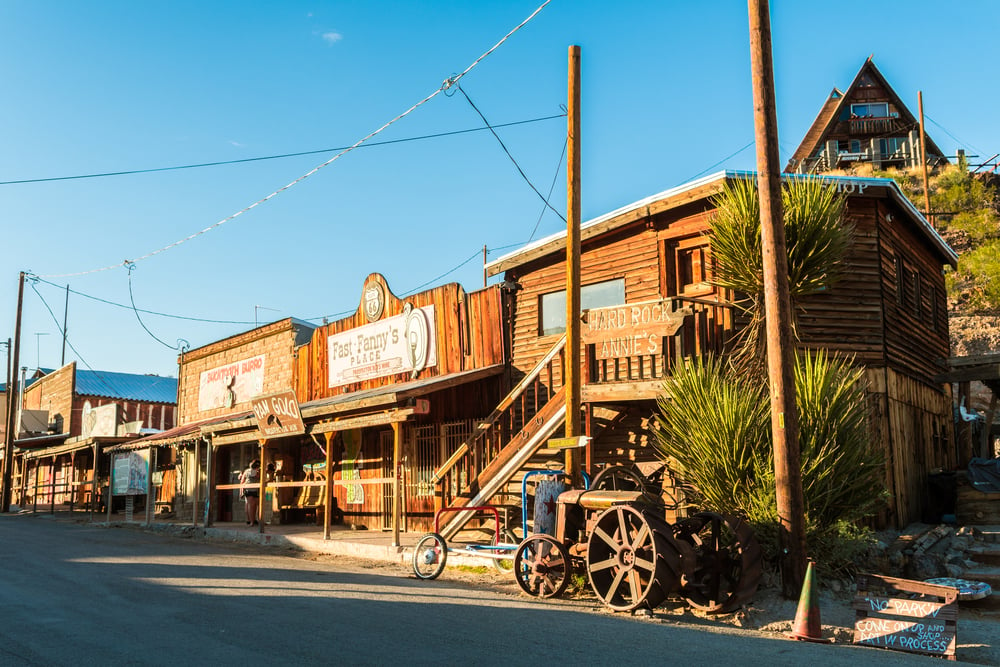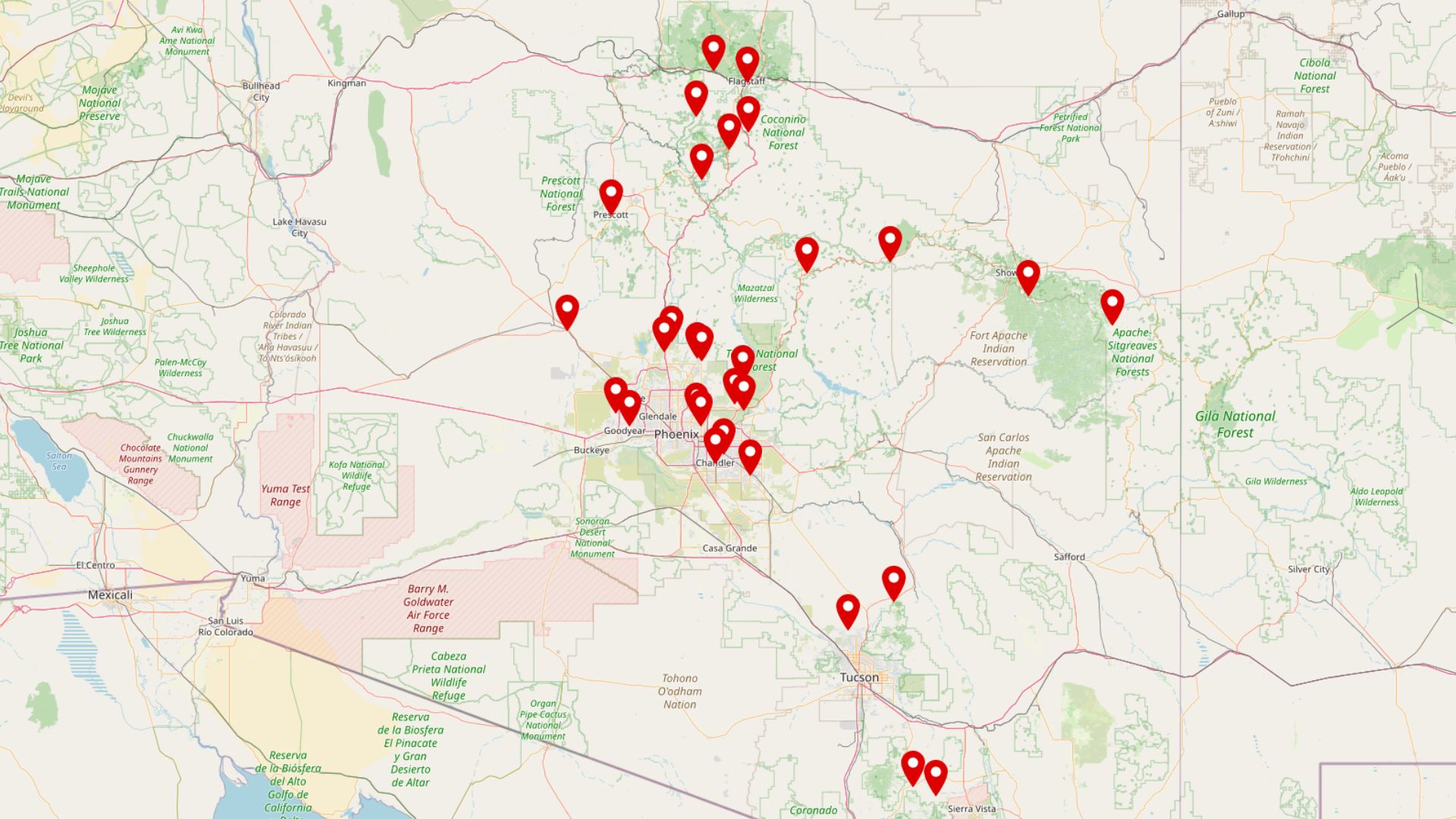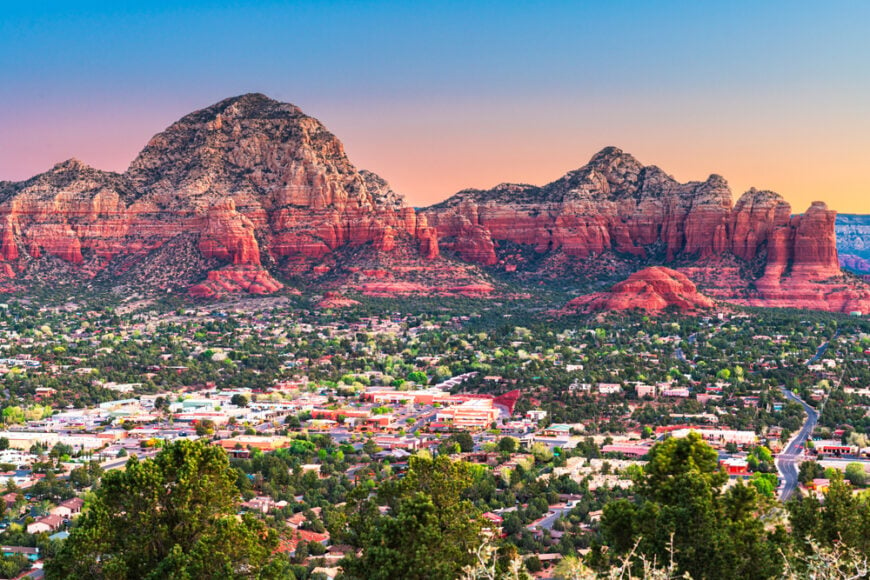
If you’re like me and have a deep appreciation for the unique beauty of desert landscapes, Arizona’s small towns offer some of the most captivating botanical experiences you’ll ever find.
Scattered across the state, these charming locales are gateways to stunning desert botanical gardens that showcase an array of cacti, succulents, and resilient flora adapted to the arid climate.
From artistic havens to historic mining towns, each place has its own story intertwined with the natural splendor of the region. Join me as I count down 17 of the best small towns in Arizona, where you can immerse yourself in the wonders of desert plant life.
17. Superior
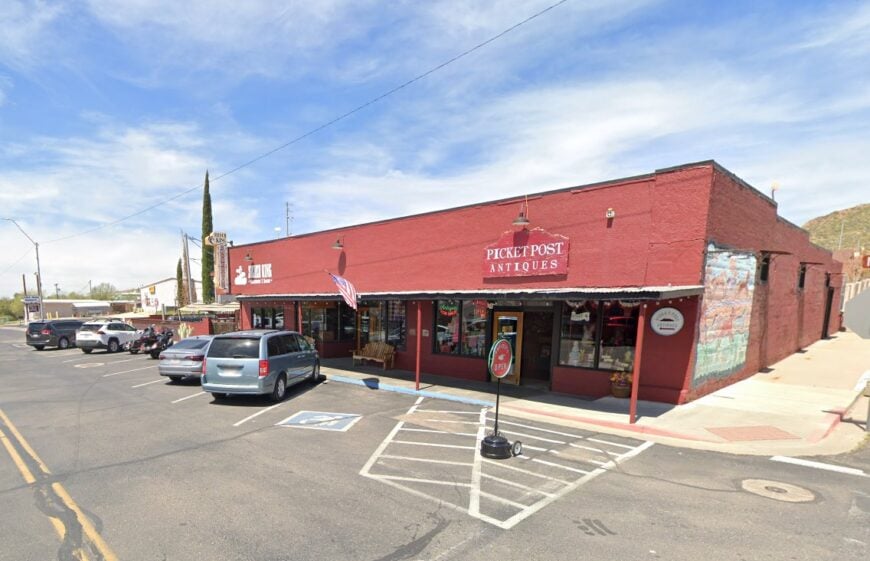
Nestled at the base of Arizona’s majestic mountains, Superior is a quaint mining town that I’ve found to be a hidden gem for desert plant enthusiasts.
The town’s proximity to the Boyce Thompson Arboretum offers an unparalleled opportunity to explore one of the state’s oldest and largest botanical gardens dedicated to desert flora.
Wandering through the arboretum’s trails, I was captivated by the diversity of cacti, succulents, and wildflowers that thrive in this arid landscape. Superior itself charms visitors with its historic buildings, friendly locals, and small-town atmosphere that encourages you to slow down and appreciate the surrounding natural beauty.
Beyond the gardens, you can enjoy hiking on nearby trails that showcase stunning desert vistas and unique geological formations. For anyone looking to embrace the desert’s serene beauty, Superior provides an inviting gateway.
Superior offers 3-4 bedroom homes priced between $150,000 and $300,000, providing a quaint desert escape with a blend of affordability and charm.
Where is Superior?
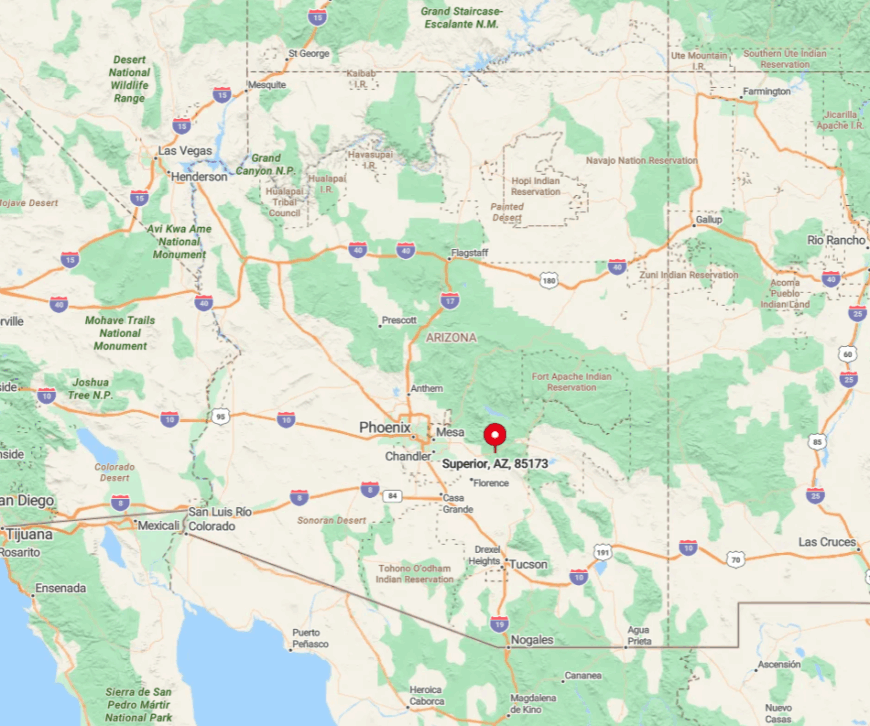
Located approximately 60 miles east of Phoenix, along U.S. Route 60, Superior sits at the intersection of the desert and the mountains, offering a unique blend of geographical landscapes.
The town is perched at the foot of Apache Leap Mountain, adding a dramatic backdrop to its rustic charm. I find the drive to Superior quite scenic, passing through rugged cliffs and open desert landscapes that set the tone for the botanical wonders ahead.
To get there, you can take a leisurely drive east from Phoenix, enjoying the changing scenery as urban sprawl gives way to wide-open spaces and towering saguaros that signal your arrival in this desert haven.
16. Patagonia

Tucked away in southern Arizona, Patagonia is a small town that harmoniously blends desert flora with riparian ecosystems, creating a paradise for both plant lovers and birdwatchers like me.
The area’s rich biodiversity is showcased in places like the Patagonia-Sonoita Creek Preserve, where cottonwood-willow forests meet desert surroundings. Strolling through the preserve, I was amazed by the lush vegetation that contrasts with the typical arid scenery, providing habitat for an array of native plants and wildlife.
The town itself exudes a laid-back atmosphere, with local art galleries, quaint shops, and friendly cafes that reflect the community’s appreciation for nature and conservation.
For those who, like me, revel in exploring unique ecological niches, Patagonia offers a truly enriching experience. Patagonia has 3-4 bedroom homes ranging from $160,000 to $310,000, offering peaceful living amidst scenic desert landscapes and vibrant gardens.
Where is Patagonia?
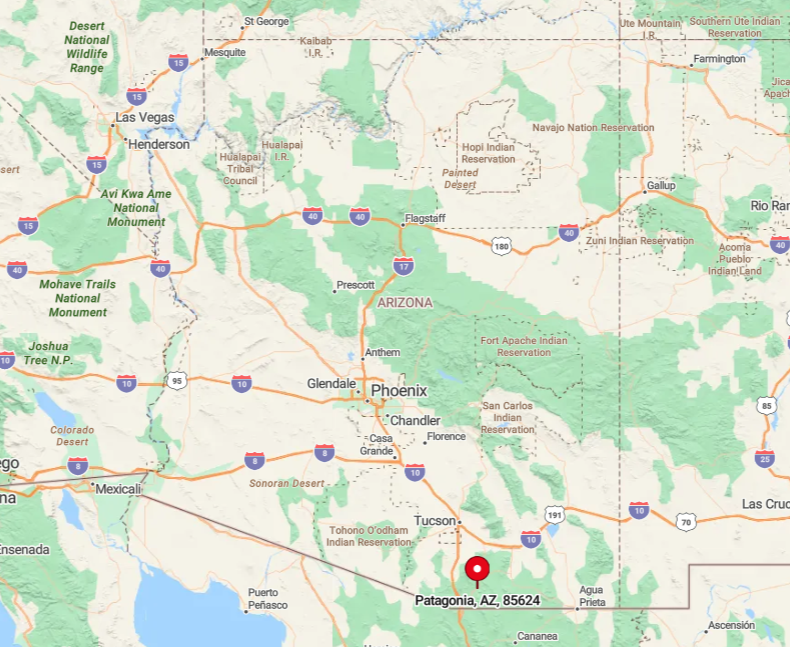
Patagonia is situated about 18 miles north of the Mexican border, nestled in the rolling hills of Santa Cruz County. The town is situated along State Route 82, making it an accessible yet tranquil destination, removed from the bustle of bustling cities.
I often enjoy the scenic drive from Tucson, which takes about an hour and a half, passing through the beautiful landscapes of southern Arizona. Patagonia’s location at the confluence of desert and riparian zones creates a unique geographic setting where you can witness the seamless transition between ecosystems.
The journey to get there is a pleasant one through some of the state’s most picturesque countryside, setting the stage for the natural wonders that await.
15. Bisbee
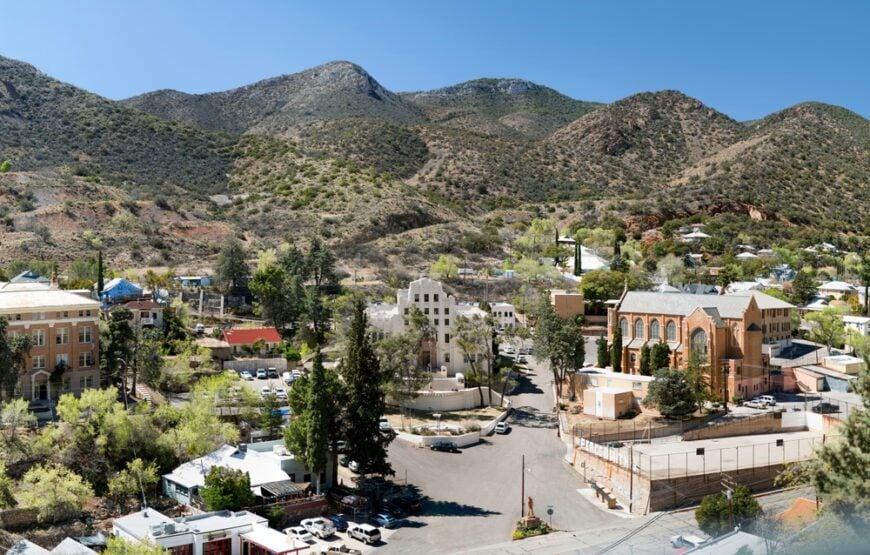
Bisbee is a town that artfully combines rich history with the rugged beauty of the desert, making it one of my favorite places to explore in Arizona. Once a booming mining town, Bisbee now captivates visitors with its well-preserved architecture, vibrant arts scene, and steep streets lined with eclectic shops and galleries.
The surrounding desert hills are home to a unique array of plant life, and I’ve enjoyed hiking trails that reveal the resilient vegetation thriving in this arid environment. Places like the Bisbee Mining & Historical Museum offer insights into the town’s past, while nearby natural areas provide a living exhibit of the desert’s botanical treasures.
It’s a place where you can meander through historic streets in the morning and immerse yourself in desert flora by afternoon. In Bisbee, 3-4 bedroom homes are priced between $160,000 and $330,000, reflecting the town’s historic appeal and proximity to lush desert flora.
Where is Bisbee?
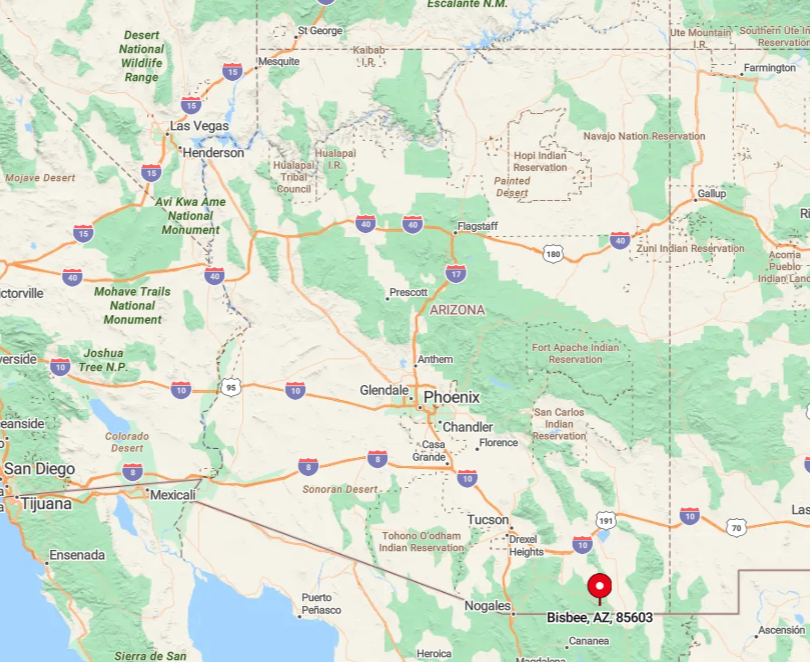
Located in the southeastern corner of Arizona, Bisbee is about 90 miles southeast of Tucson, nestled in the Mule Mountains.
The town’s elevation of over 5,500 feet provides a slightly cooler climate, which I find refreshing during my visits. Bisbee is accessible via State Route 80, and the drive offers scenic views of the desert landscape stretching toward the horizon.
The region’s geography, marked by rolling hills and canyons, adds to the town’s charm and the diversity of its plant life. Getting to Bisbee feels like stepping back in time, with the journey itself offering glimpses of the state’s natural beauty.
14. Tubac
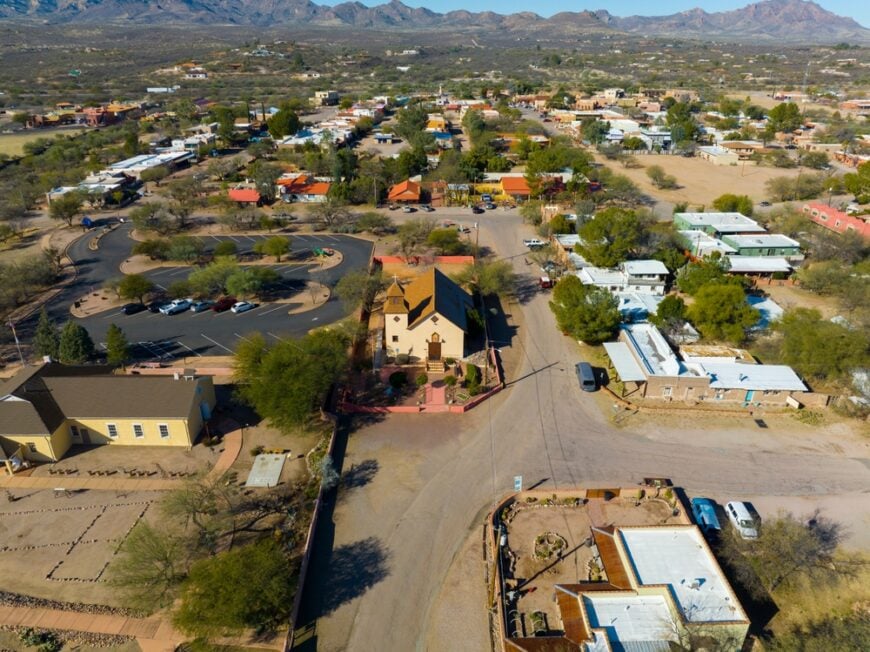
Tubac is an artistic enclave that I’ve come to love for its fusion of creativity and desert beauty. The town is renowned for its galleries and studios, which showcase works by local artists, reflecting the vibrant colors and textures of the surrounding landscape.
Beyond the art, Tubac’s proximity to the Santa Cruz River and nearby trails offers ample opportunities to immerse yourself in the native desert plant life.
I’ve enjoyed leisurely walks along the Anza Trail, where mesquite trees and blooming wildflowers line the path, creating a serene environment that stimulates both relaxation and inspiration. Tubac’s rich cultural heritage and natural setting make it a delightful destination for those seeking a blend of art and nature.
Tubac features 3-4 bedroom homes ranging from $170,000 to $320,000, offering an ideal balance of desert beauty and artistic charm near the area’s botanical treasures.
Where is Tubac?
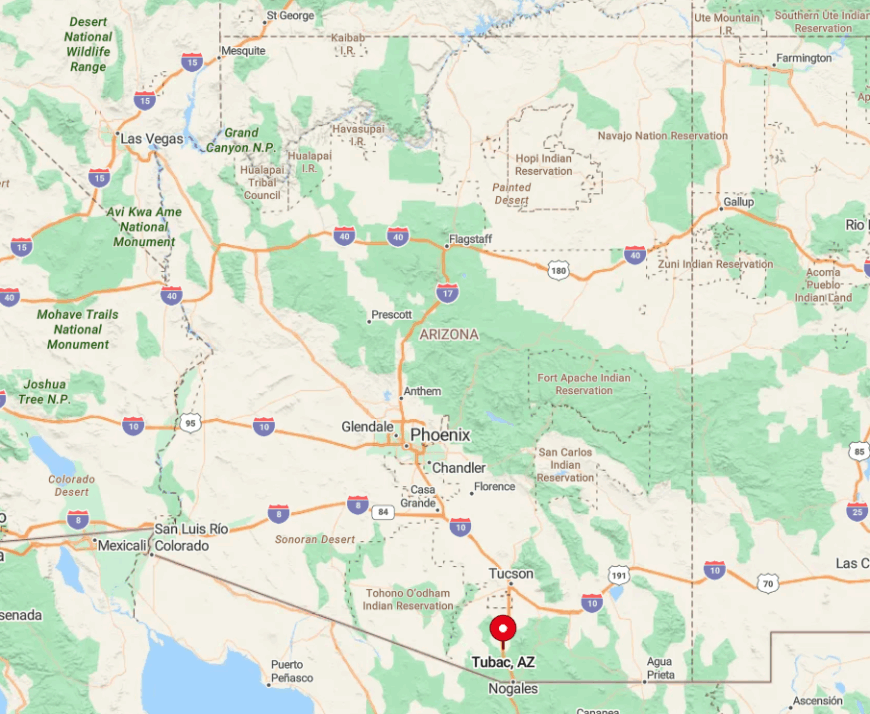
Situated approximately 45 miles south of Tucson along Interstate 19, Tubac is nestled in the Santa Cruz Valley. The town’s location along the Santa Cruz River contributes to its lush riparian zones, contrasting beautifully with the surrounding desert terrain.
I find the drive to Tubac to be an easy and pleasant journey, passing through open landscapes dotted with saguaro cacti and occasional glimpses of distant mountain ranges.
Tubac’s unique geographic position makes it a welcoming oasis where desert flora and artistic expression harmoniously coexist. Getting there is straightforward, and the scenic route adds to the anticipation of the experiences awaiting you in this charming town.
13. Ajo

Ajo is a small town that serves as a gateway to some of the most spectacular desert landscapes I’ve encountered in the Sonoran Desert. With its Spanish Colonial Revival architecture and quiet streets, Ajo exudes a laid-back atmosphere that invites you to slow down and appreciate the surrounding natural beauty.
The highlight for me is the proximity to Organ Pipe Cactus National Monument, where vast expanses of cacti, including the namesake organ pipe cactus, create a breathtaking and otherworldly scene.
Exploring the monument’s trails, I was struck by the diversity of plant life that has adapted to thrive in such arid conditions. Ajo itself offers charming accommodations and local eateries that make for a comfortable base as you delve into the heart of the desert.
Ajo offers 3-4 bedroom homes priced between $150,000 and $280,000, providing an affordable opportunity to experience desert landscapes and vibrant gardens.
Where is Ajo?
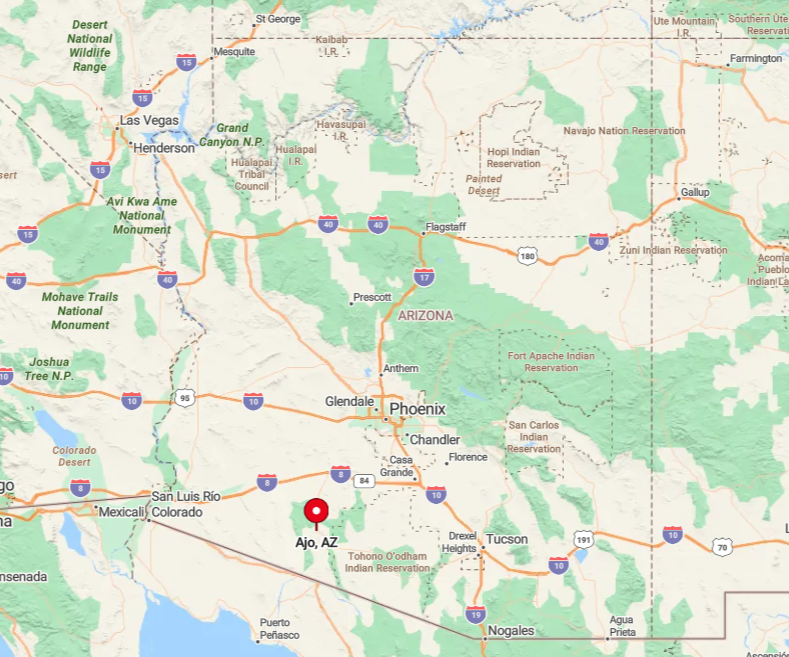
Located in southwestern Arizona, Ajo is situated approximately 130 miles west of Tucson along State Route 85. The town is nestled between rugged mountains and expansive desert plains that characterize this part of the state.
Driving to Ajo, I’ve often marveled at the vastness of the landscape, where the sky seems to stretch endlessly above the saguaro-studded terrain. Its proximity to the Mexican border adds an element of cultural richness and cross-border exchange.
To get there, you can take Interstate 10 west from Tucson before heading south on State Route 85, making for a road trip that immerses you in the quintessential desert environment.
12. Page
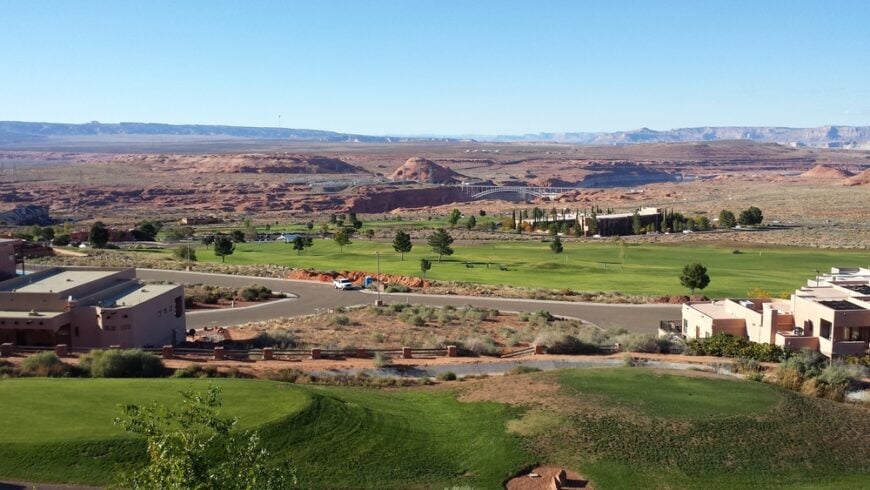
Perched on the edge of the Colorado Plateau, Page is a town that offers an incredible blend of awe-inspiring landscapes and intriguing desert plant life. The town is perhaps best known for its proximity to Lake Powell and Antelope Canyon, two natural wonders that have left me speechless every time I’ve visited.
While the striking rock formations and waterways capture much attention, the surrounding desert terrain is home to hardy plants that have adapted to the harsh conditions. Exploring the area, I’ve come across pockets of unique flora that add subtle beauty to the dramatic scenery.
From boating on the lake to hiking trails that wind through sandstone canyons, Page offers numerous opportunities to connect with nature. Page has 3-4 bedroom homes ranging from $170,000 to $350,000, making it an attractive option for those seeking a scenic desert retreat near stunning natural wonders.
Where is Page?
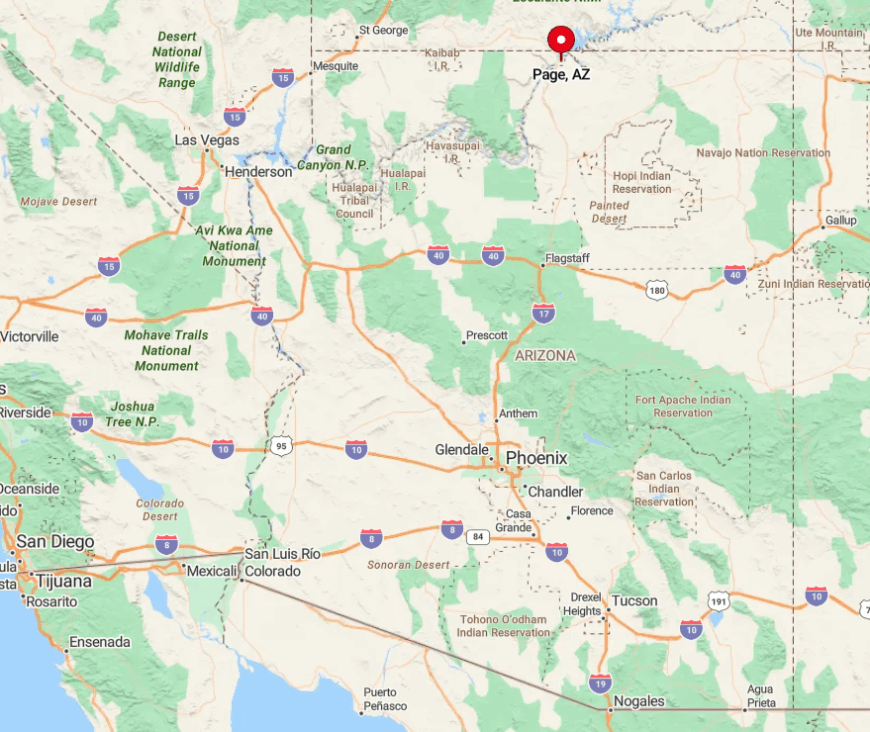
Page is situated in northern Arizona, near the Utah border, making it a central hub for exploring the region’s iconic landscapes. The town is accessible via U.S. Route 89, and I often find the drive to be filled with picturesque views of the desert, mesas, and distant mountains.
Page’s location atop Manson Mesa gives it an elevated perspective of the surrounding area, with Lake Powell’s blue waters contrasting against the red sandstone.
Getting there involves a scenic journey through some of Arizona’s most captivating terrain, setting the stage for the natural splendors that await upon arrival.
11. Jerome
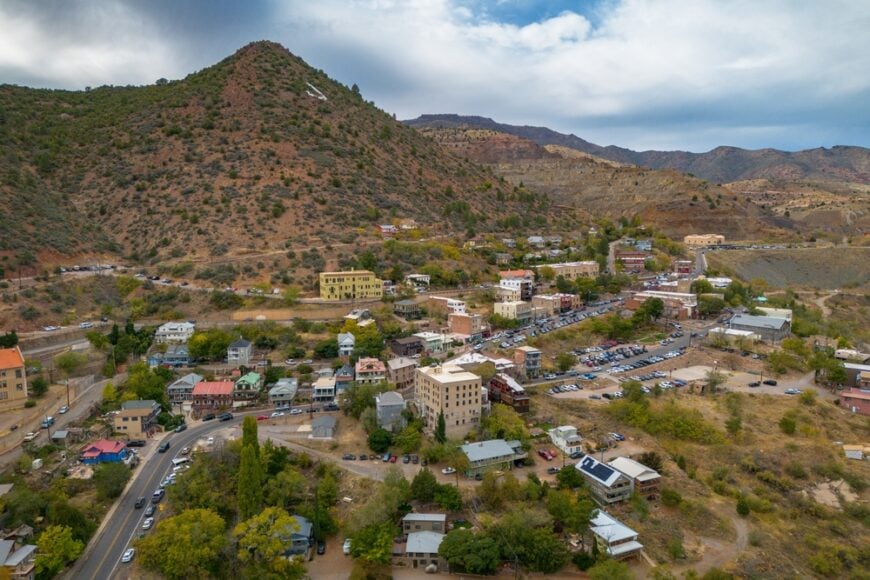
Jerome is a fascinating hillside town that seems to cling to the side of Cleopatra Hill, offering panoramic views of the Verde Valley below. Once a thriving mining community, it now enchants visitors like me with its historic charm, artisan shops, and haunting ghost stories.
Beyond the intriguing streets, I enjoy exploring the surrounding trails where desert plants flourish among the rocky terrain. The elevation provides a unique environment where certain flora thrive, and I’ve found that hiking here combines both exercise and education about the local ecosystem.
The mix of history, art, and nature makes Jerome a compelling destination for a variety of interests. Jerome offers 3-4 bedroom homes priced between $160,000 and $340,000, ideal for those who appreciate history and lush desert surroundings.
Where is Jerome?
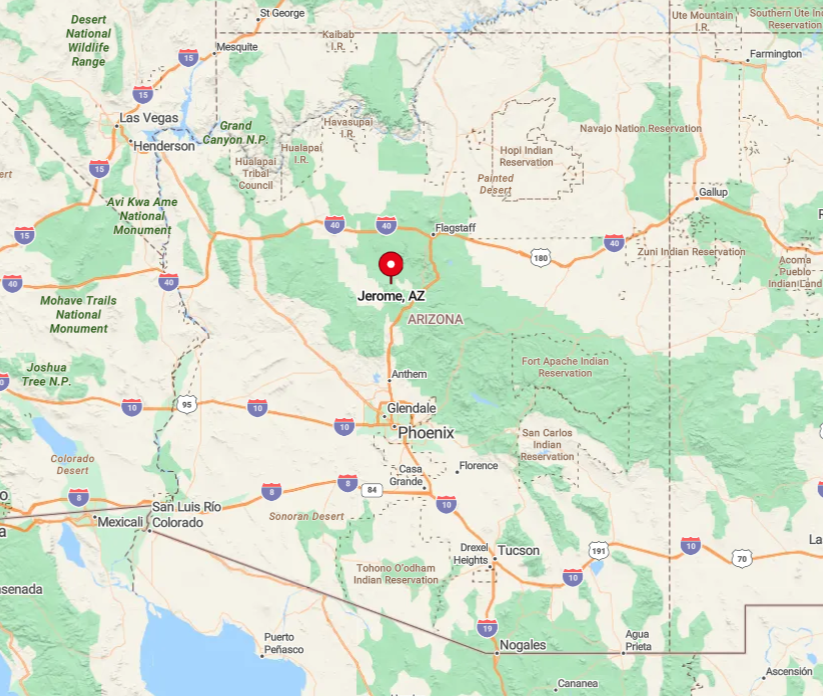
Jerome is located in central Arizona, roughly midway between Prescott and Flagstaff along State Route 89A.
The town sits at an elevation of over 5,000 feet, which contributes to its cooler climate and distinctive vegetation compared to the lower desert areas. I usually reach Jerome by taking the scenic drive through the Mingus Mountain region, which offers winding roads and stunning vistas.
Accessing this former “Wickedest Town in the West” is an adventure in itself, and the journey provides glimpses of the diverse landscapes that define the state. The town’s perch on the mountainside ensures that breathtaking views accompany every visit.
10. Camp Verde

Camp Verde is a town steeped in history and natural beauty that I find endlessly fascinating. Located near Montezuma Castle National Monument, this area offers a glimpse into the lives of the Sinagua people, who built impressive cliff dwellings over 800 years ago.
Walking through the monument, I’m always struck by how humans and nature have coexisted in this rugged landscape. The area around Camp Verde is rich with desert plants, including towering sycamores and a variety of cacti that thrive along the Verde River.
Beyond the historical sites, I’ve enjoyed the local wineries, hiking trails, and the serene atmosphere that invites reflection and exploration. Camp Verde provides 3-4 bedroom homes priced between $160,000 and $290,000, offering easy access to the desert’s beauty and local botanical gardens.
Where is Camp Verde?
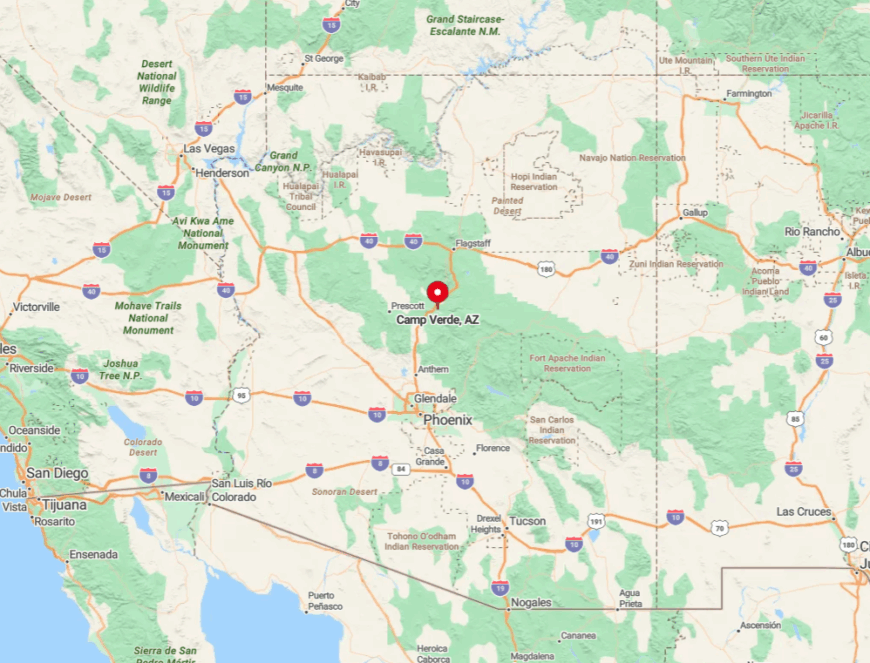
Located in the heart of Arizona, Camp Verde sits along Interstate 17, making it easily accessible from both Phoenix and Flagstaff.
The town is nestled in the Verde Valley, an area renowned for its fertile lands and diverse riparian ecosystems, which contrast with the surrounding desert. I often appreciate the change in scenery when entering the valley, with greener landscapes and the flowing river providing a refreshing backdrop.
To get there, you can take a straightforward drive north from Phoenix, and the central location makes it a convenient stop for those exploring the state’s diverse environments. Camp Verde’s unique setting offers a blend of historical intrigue and natural splendor.
9. Willcox
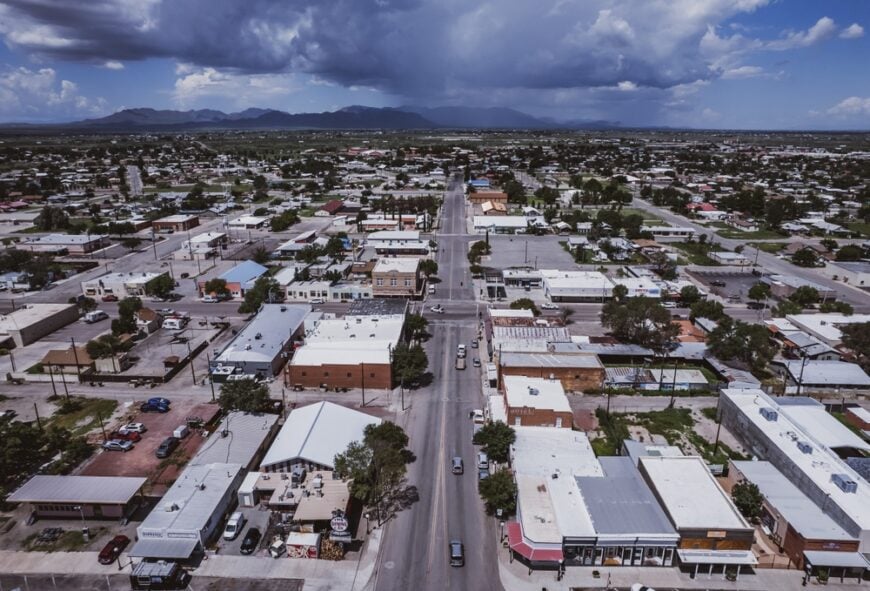
Willcox is a small town that serves as an ideal starting point for adventures into some of Arizona’s most unique natural areas. The town itself has a rich cowboy heritage, but what draws me here are the nearby “Sky Islands” of the Chiricahua Mountains.
This region is a botanical marvel where desert landscapes give way to pine forests as you ascend in elevation. Exploring Chiricahua National Monument, I’ve been amazed by the dramatic rock formations and the diverse plant life that changes with every step uphill.
Willcox also boasts a burgeoning wine industry, which, in combination with its natural attractions, makes it a delightful destination for a variety of interests. Willcox features 3-4 bedroom homes priced between $140,000 and $280,000, providing a peaceful desert town with affordable options for garden enthusiasts.
Where is Willcox?

Situated in southeastern Arizona along Interstate 10, Willcox is about 80 miles east of Tucson. The town is situated in the Sulphur Springs Valley, surrounded by vast plains and bordered by mountain ranges.
I often find the drive to Willcox relaxing, with expansive skies and open roads that embody the essence of the American Southwest. Access to the Chiricahua Mountains is a short drive south of town, and the transition from desert to forest is both rapid and remarkable.
Getting to Willcox is straightforward, and its location makes it a convenient base for exploring the natural wonders of this lesser-known part of the state.
8. Oracle
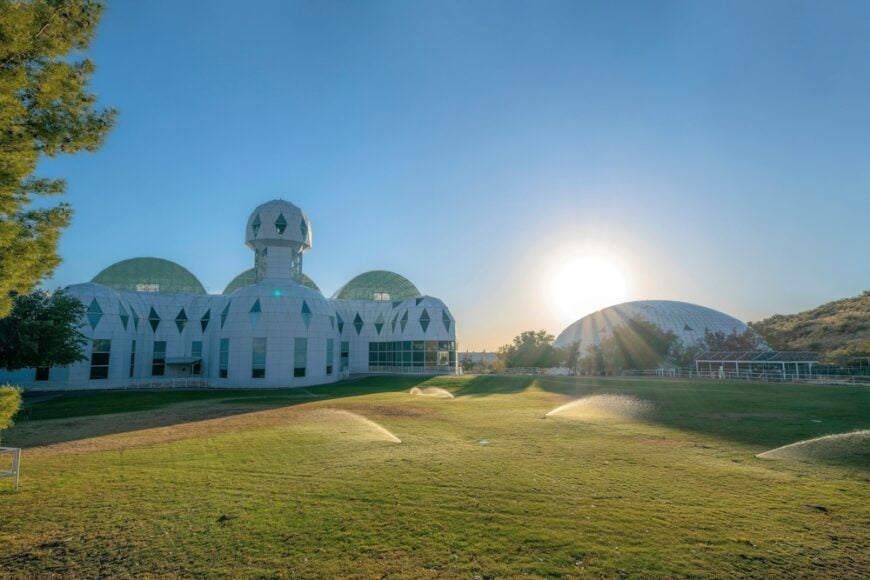
Oracle is a small community that offers big opportunities for those interested in environmental science and desert ecosystems. The highlight for me is Biosphere 2, a massive research facility where you can walk through various biomes, including a desert sphere that replicates and studies arid environments.
Touring Biosphere 2, I’ve gained a deeper understanding of how plants adapt to harsh conditions, making it both an educational and inspiring experience. The town itself has a charming, off-the-beaten-path feel, with local cafes and art venues that reflect the creative spirit of its residents.
Surrounding trails offer additional opportunities to observe desert flora up close in its natural habitat. Oracle offers 3-4 bedroom homes ranging from $150,000 to $290,000, making it an ideal place to enjoy the desert landscape while being close to local gardens.
Where is Oracle?
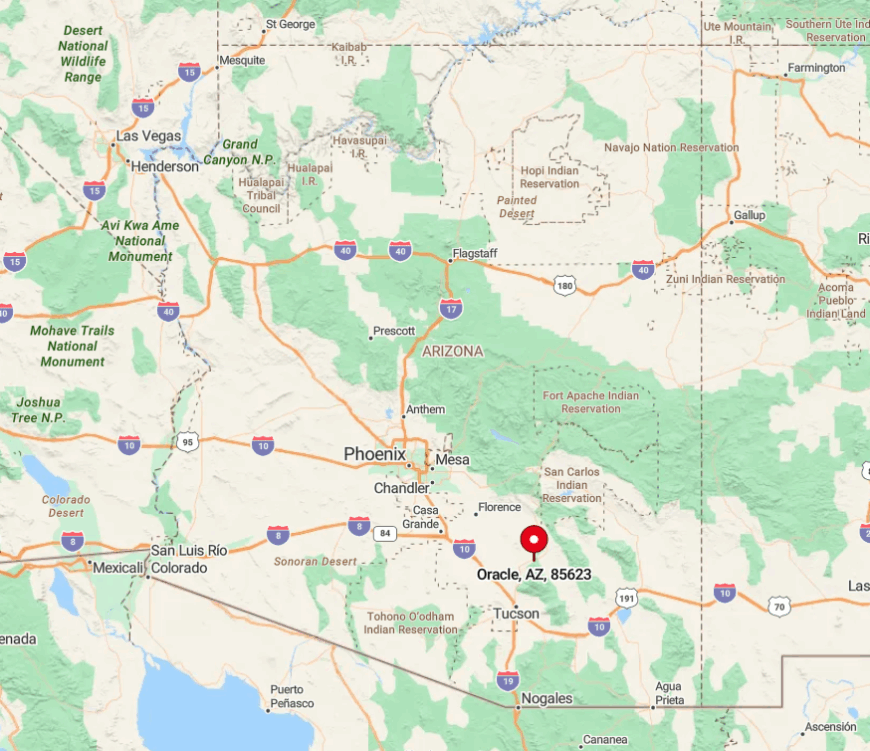
Oracle is located in the foothills of the Santa Catalina Mountains, about 35 miles north of Tucson via Highway 77. The town sits at an elevation of over 4,500 feet, offering a cooler climate and a distinctive blend of high-desert vegetation.
I enjoy the scenic drive up Oracle Road, where saguaros give way to oak woodlands as you gain altitude. The proximity to both desert and mountain environments makes Oracle a fascinating destination for nature enthusiasts like me.
Getting there is an easy trip from Tucson, and the peaceful atmosphere makes it feel worlds away from city life.
7. Safford
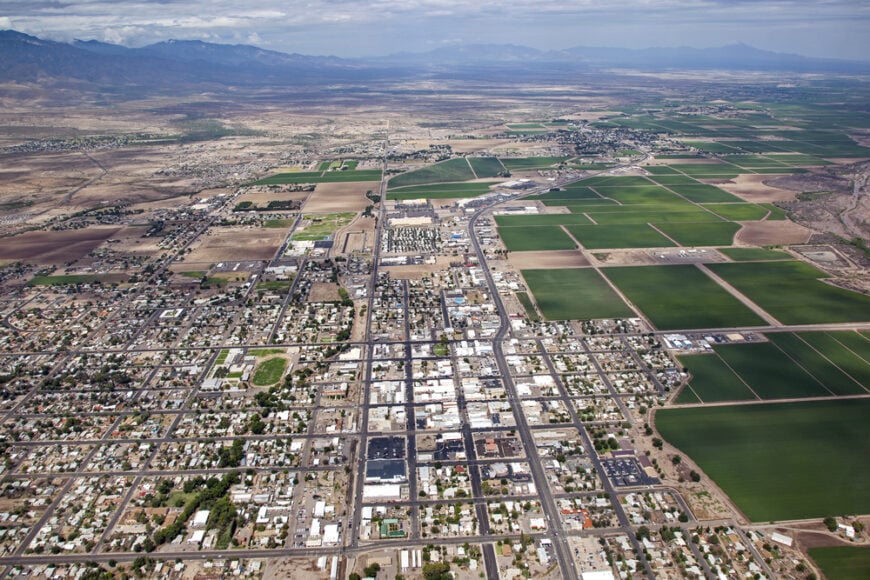
Safford is a welcoming town that I’ve come to appreciate for its soothing hot springs and opportunities to connect with the desert’s natural beauty.
Located near the Gila River, Safford is home to Roper Lake State Park, where you can soak in natural hot springs surrounded by native desert plants. I always find relaxation here, whether it’s through a leisurely swim, fishing, or simply enjoying the scenic views of Mount Graham in the distance.
The park’s trails offer gentle walks among mesquite trees and cacti, providing a tranquil setting to observe the local flora and fauna. Safford combines the comforts of small-town hospitality with the restorative powers of nature.
Where is Safford?
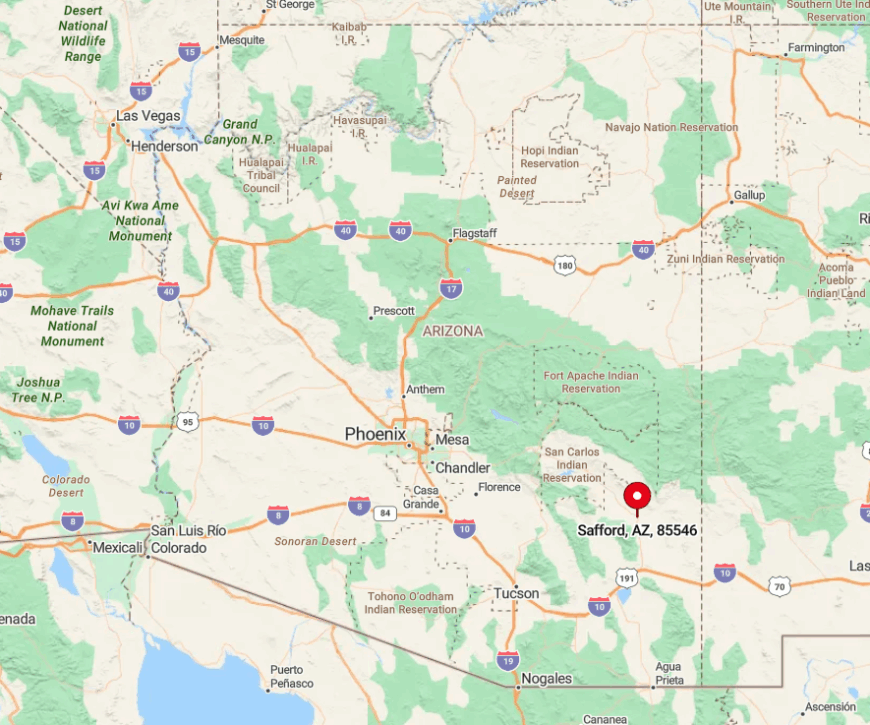
Safford is situated in eastern Arizona, approximately 165 miles east of Phoenix along U.S. Route 70. The town is situated in the Gila Valley, surrounded by a mix of desert and mountain landscapes that offer a diverse range of recreational activities.
I usually take the drive from Tucson, which takes about two and a half hours through scenic desert terrain. The location provides access not only to Roper Lake but also to the Pinaleño Mountains, home to the highest peaks in southern Arizona.
Getting to Safford is a journey through open spaces and wide skies, setting a peaceful tone for your visit. Safford presents 3-4 bedroom homes priced between $170,000 and $300,000, providing a scenic location amidst the desert with access to beautiful botanical gardens.
6. Wickenburg
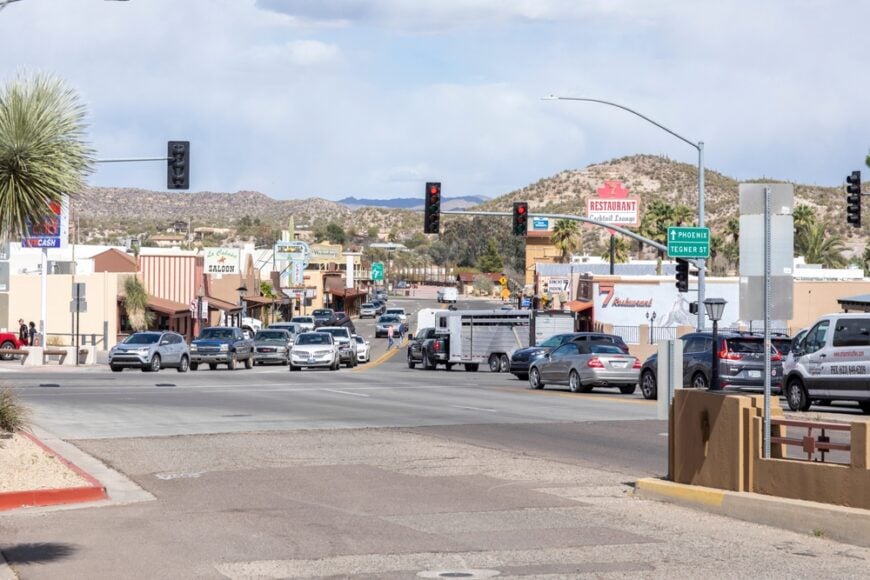
Wickenburg is a town that brings out the cowboy spirit in me, with its rich Western heritage and expansive desert landscapes. Known as the “Dude Ranch Capital of the World,” it’s the perfect place to experience the desert from horseback, a perspective that gives you an intimate connection with the land.
Riding along sandy washes and rocky trails, I’ve encountered a diverse array of desert plants, from towering saguaros to vibrant wildflowers in full bloom. The town itself preserves its historic charm with museums, art galleries, and annual rodeos that celebrate its frontier past.
Wickenburg offers an authentic taste of the Old West, set amidst the beauty of the desert’s diverse botanical landscape. Wickenburg has 3-4 bedroom homes ranging from $180,000 to $360,000, offering a mix of desert serenity and vibrant local flora.
Where is Wickenburg?
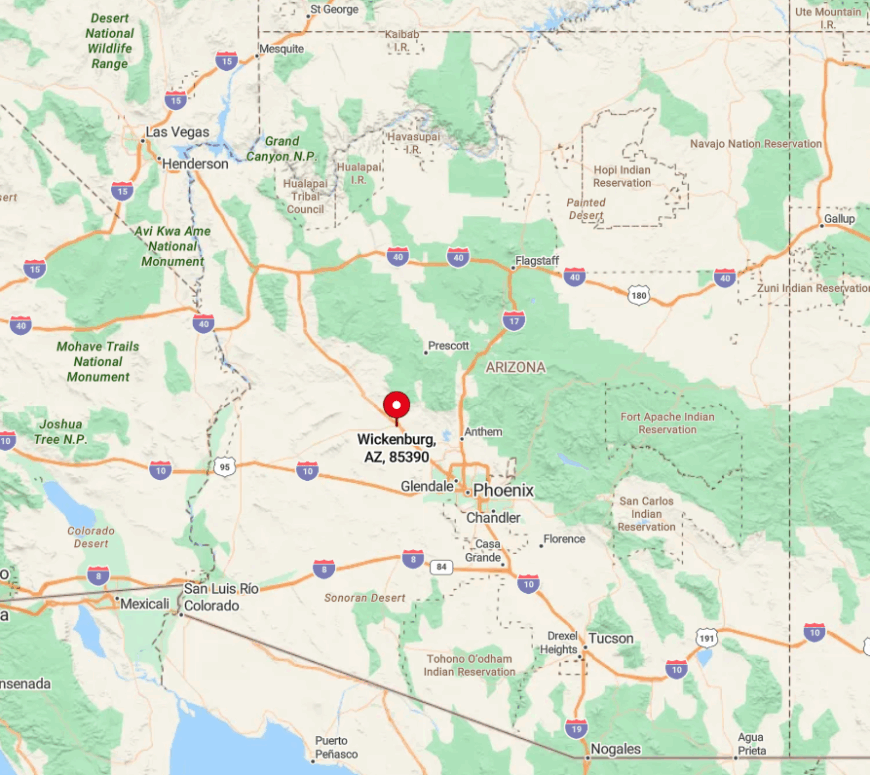
Located about 60 miles northwest of Phoenix, Wickenburg sits at the junction of U.S. Route 60 and State Route 93.
The town is framed by the Vulture Mountains to the south and the Weaver Mountains to the north, providing a scenic backdrop for outdoor activities. I often find the drive along U.S. Route 60 to be an enjoyable escape from the city’s hustle, with changing landscapes that ease you into a more relaxed state of mind.
Wickenburg’s accessible location makes it an ideal getaway for a weekend or longer, and its proximity to Phoenix means you can be immersed in desert tranquility without a lengthy journey.
5. Globe
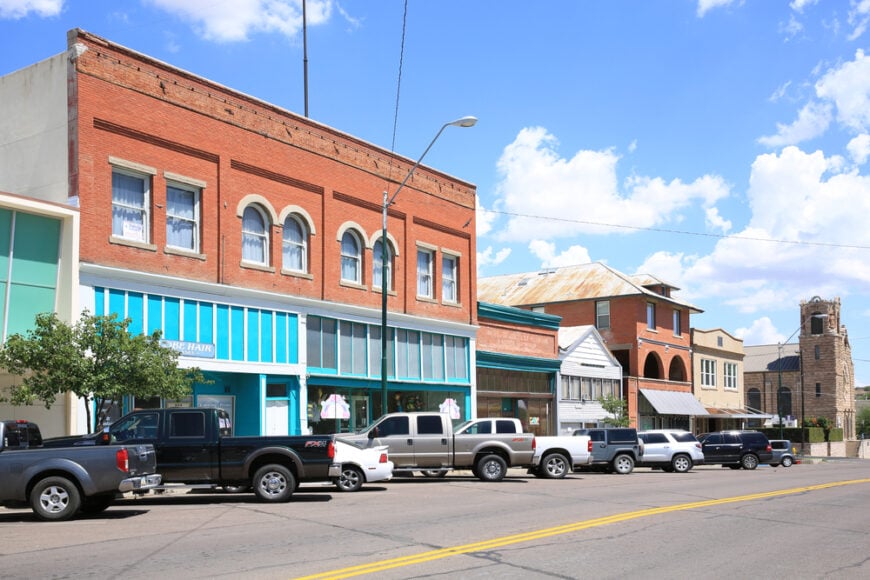
Globe is a historic mining town that offers a rich blend of culture, history, and desert beauty. As you stroll through its well-preserved downtown, you can sense the echoes of the past while enjoying modern amenities like cafes and antique shops.
What draws me particularly to Globe is the surrounding desert landscape, where a remarkable variety of cacti and succulents can be found. The Pinal Mountains, located nearby, offer hiking trails that showcase the transition from desert flora to pine forests, highlighting the ecological diversity of the region.
Exploring Globe allows me to delve into Arizona’s mining heritage while appreciating the resilience and beauty of desert plant life. Globe offers 3-4 bedroom homes priced between $160,000 and $310,000, perfect for those seeking desert beauty and a thriving botanical environment.
Where is Globe?
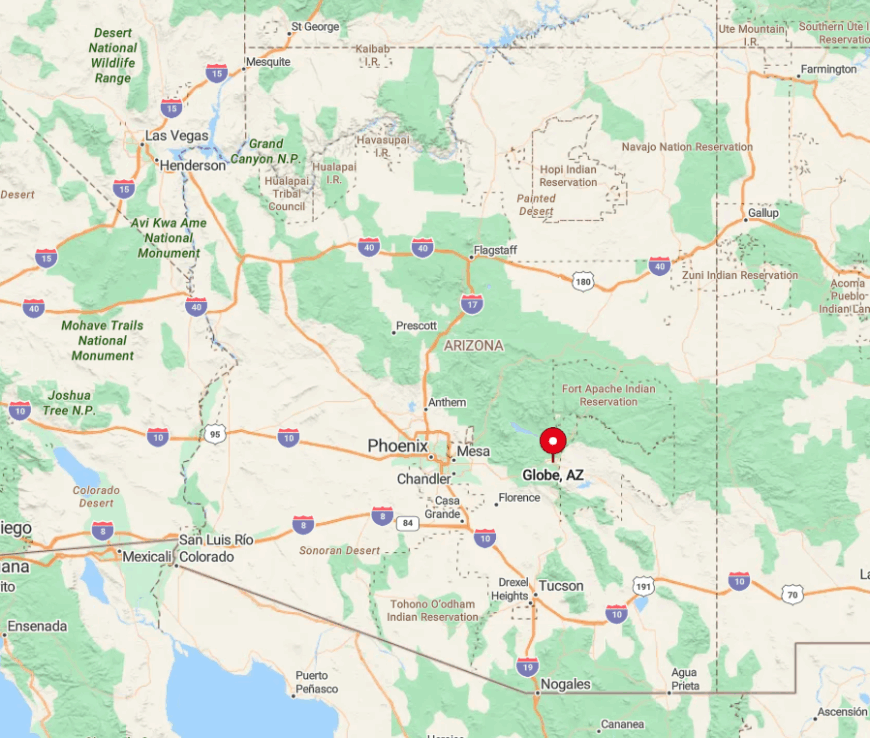
Globe is situated about 90 miles east of Phoenix along U.S. Route 60, nestled in the foothills of the Pinal Mountains.
The town’s elevation of around 3,500 feet offers a slightly cooler climate, which I’ve found pleasant when exploring the outdoors. The drive to Globe takes you through the scenic Superstition Mountains and Tonto National Forest, making the journey as enjoyable as the destination.
To get there, you can head east from Phoenix on U.S. Route 60, with the road winding through dramatic landscapes that highlight Arizona’s rugged terrain. Globe’s strategic location makes it a convenient and rewarding trip for those seeking both history and natural beauty.
4. Winslow
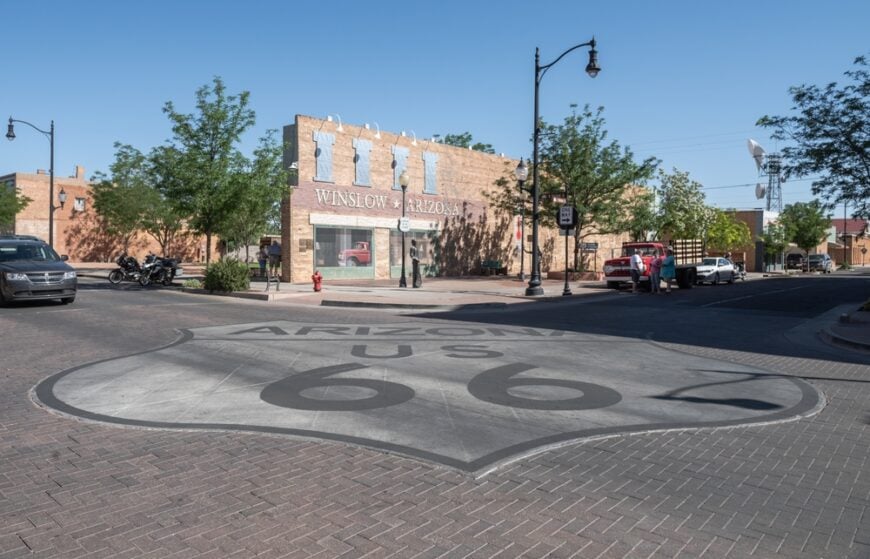
Winslow may be famous for the Eagles’ song that immortalized “standing on a corner,” but I’ve found that the town offers much more than its musical legacy. Situated along historic Route 66, Winslow serves as a gateway to exploring northern Arizona’s high desert landscapes.
Nearby, the Little Painted Desert County Park showcases an array of colorful badlands, adorned with hardy desert plants that thrive in this harsh environment. Walking along the trails, I’ve admired the tenacity of the flora that adds subtle life to the stark but beautiful scenery.
Winslow’s blend of Americana, history, and access to natural wonders makes it a unique stop on any Arizona journey. Winslow features 3-4 bedroom homes ranging from $150,000 to $300,000, providing a quaint desert living experience surrounded by natural beauty.
Where is Winslow?
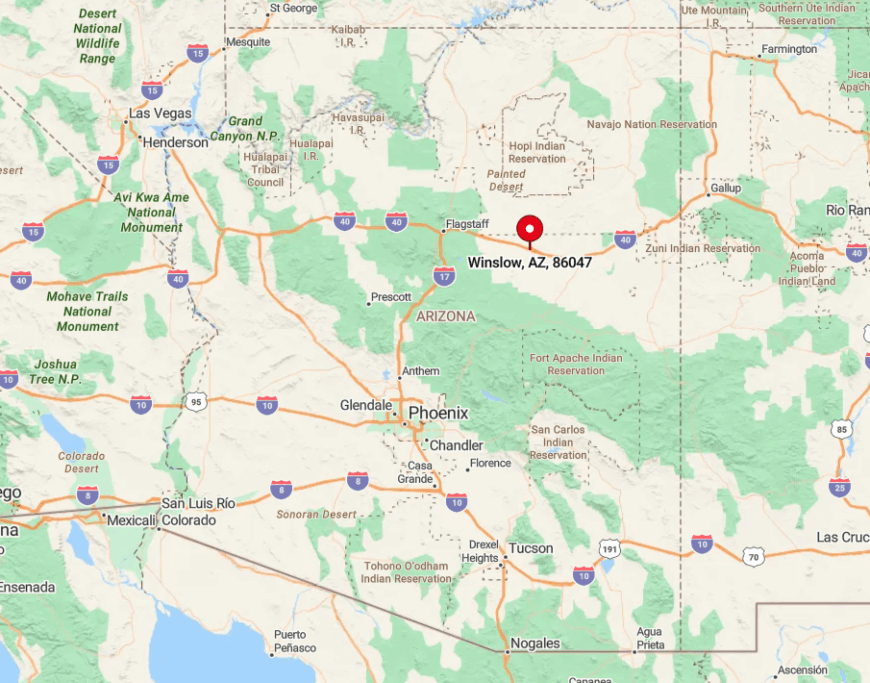
Located in northeastern Arizona along Interstate 40, Winslow is approximately 60 miles east of Flagstaff.
The town sits on the edge of the Colorado Plateau, at an elevation of approximately 4,800 feet, offering cool, dry air characteristic of the region. I usually reach Winslow by driving east from Flagstaff, taking in the vast open spaces and enjoying glimpses of the San Francisco Peaks in the distance.
The town’s location along the historic Route 66 adds to its historical charm, while its proximity to parks and natural sites makes it a convenient base for exploration. Getting there is part of the adventure, with the open road stretching out before you.
3. Cottonwood
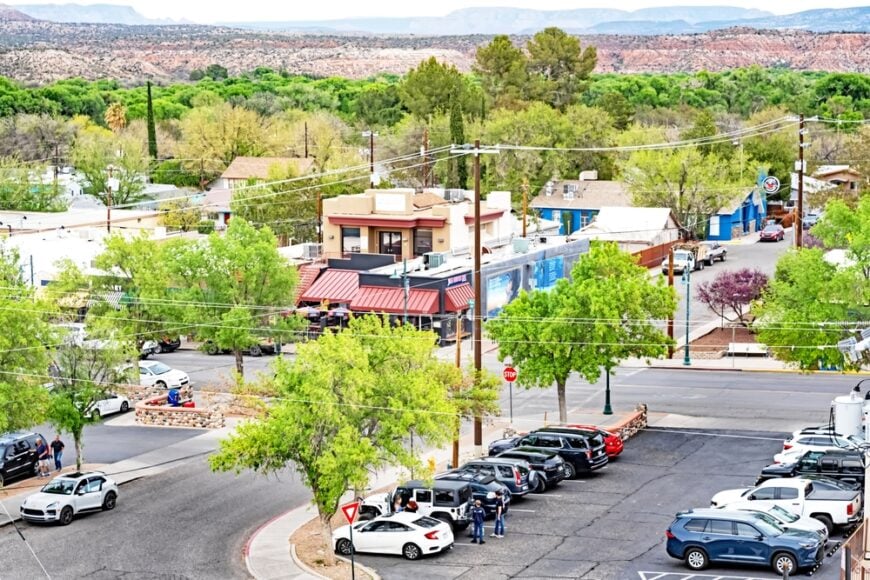
Cottonwood is a vibrant town that I’ve grown fond of for its surprising mix of desert landscapes and lush riparian zones. Situated in the Verde Valley, Cottonwood offers access to numerous wineries, making it a delightful destination for those who appreciate both natural beauty and fine wines.
The town’s proximity to Dead Horse Ranch State Park allows me to easily explore trails that wind along the Verde River, showcasing a diverse array of plant life, from cottonwoods to desert scrub.
The contrast between the green riverbanks and the surrounding desert hills creates a unique environment that is both soothing and invigorating. Cottonwood’s charming downtown area, featuring boutique shops and eateries, enhances the overall appeal.
Cottonwood offers 3-4 bedroom homes priced between $160,000 and $330,000, offering access to lush desert gardens and breathtaking landscapes.
Where is Cottonwood?

Cottonwood is located in central Arizona, about 100 miles north of Phoenix and 50 miles south of Flagstaff. Accessible via State Route 260, the town is nestled between the Mingus Mountains and the red rocks of Sedona.
I often take the scenic drive through the Verde Valley, which offers panoramic views of the high desert terrain interspersed with green belts along the river. Cottonwood’s elevation of approximately 3,300 feet offers a pleasant climate, making outdoor activities enjoyable year-round.
Getting there is an easy trip, and the town’s central location makes it an ideal hub for exploring the region’s many attractions.
2. Holbrook
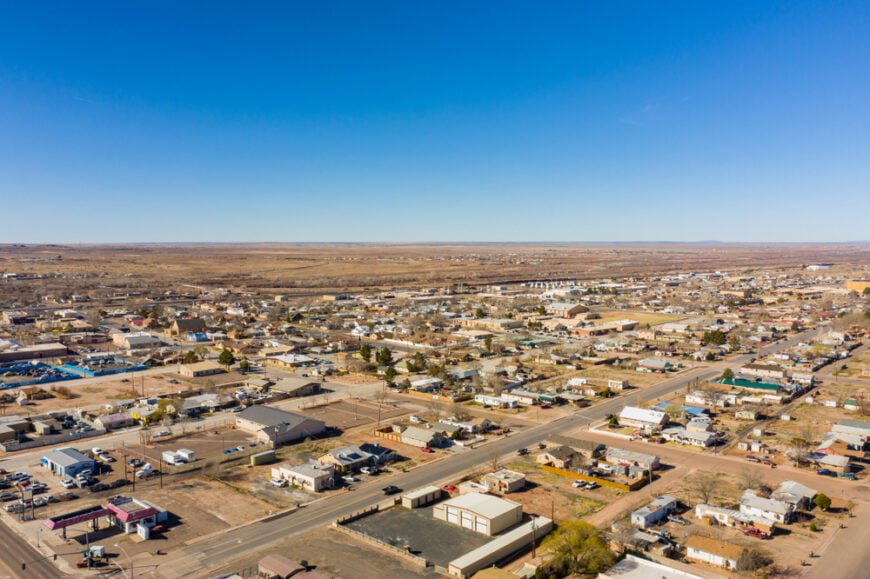
Holbrook is a town that serves as a portal to the distant past, allowing me to walk among the remnants of prehistoric times literally. Just a short drive from the Petrified Forest National Park, Holbrook offers easy access to some of the most striking natural wonders I’ve ever seen.
Within the park, ancient trees have turned to stone over millions of years, creating a surreal landscape dotted with colorful petrified logs and surrounded by desert flora. Exploring the park’s trails, I’ve been fascinated by how the desert plants coexist with these ancient relics, painting a picture of resilience and time’s unyielding march.
Holbrook itself retains the nostalgic feel of a classic Route 66 town, adding to its charm. Holbrook has 3-4 bedroom homes ranging from $140,000 to $290,000, offering a budget-friendly option for those seeking desert charm and proximity to local gardens.
Where is Holbrook?
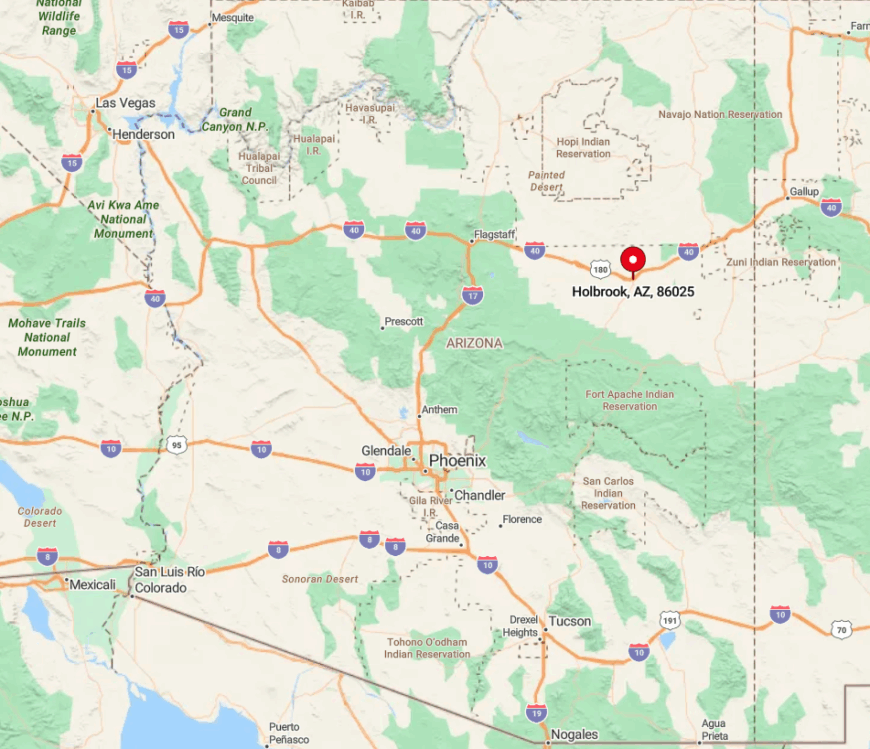
Holbrook is situated in northeastern Arizona along Interstate 40, approximately 90 miles east of Flagstaff. The town is situated on the high desert plateau at an elevation of around 5,000 feet, offering a cool, arid climate that’s perfect for exploration.
Reaching Holbrook is straightforward, with a drive east from Flagstaff offering wide-open views of the Painted Desert landscapes. The town’s proximity to both the Petrified Forest National Park and the Painted Desert makes it an ideal base for exploration.
Arriving in Holbrook, you can’t help but feel connected to the vastness and history of the American Southwest.
1. Sedona
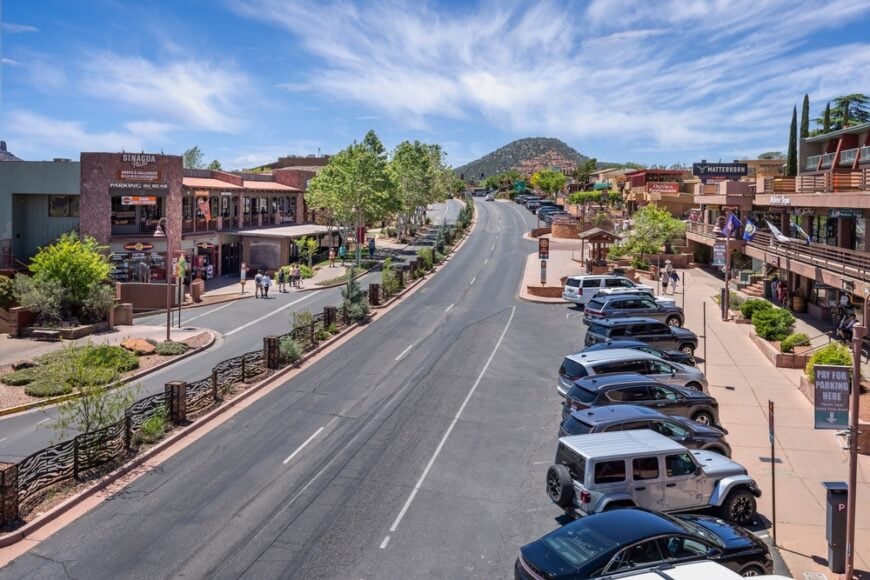
Sedona holds a special place in my heart, with its awe-inspiring red rock formations and vibrant energy that seem to rejuvenate the soul. The town is a mecca for outdoor enthusiasts, artists, and anyone seeking the profound beauty of nature.
Hiking through trails like those at Red Rock State Park, I’ve been immersed in landscapes where desert plants thrive amid towering sandstone cliffs. The variety of flora here is remarkable, from hardy cacti to delicate wildflowers that add bursts of color against the red earth.
Sedona’s unique combination of geological wonders and botanical diversity makes it, in my view, the best small town in Arizona for experiencing desert botanical gardens in their most natural form.
Sedona presents 3-4 bedroom homes priced between $220,000 and $400,000, providing an idyllic escape surrounded by striking desert views and vibrant plant life.
Where is Sedona?
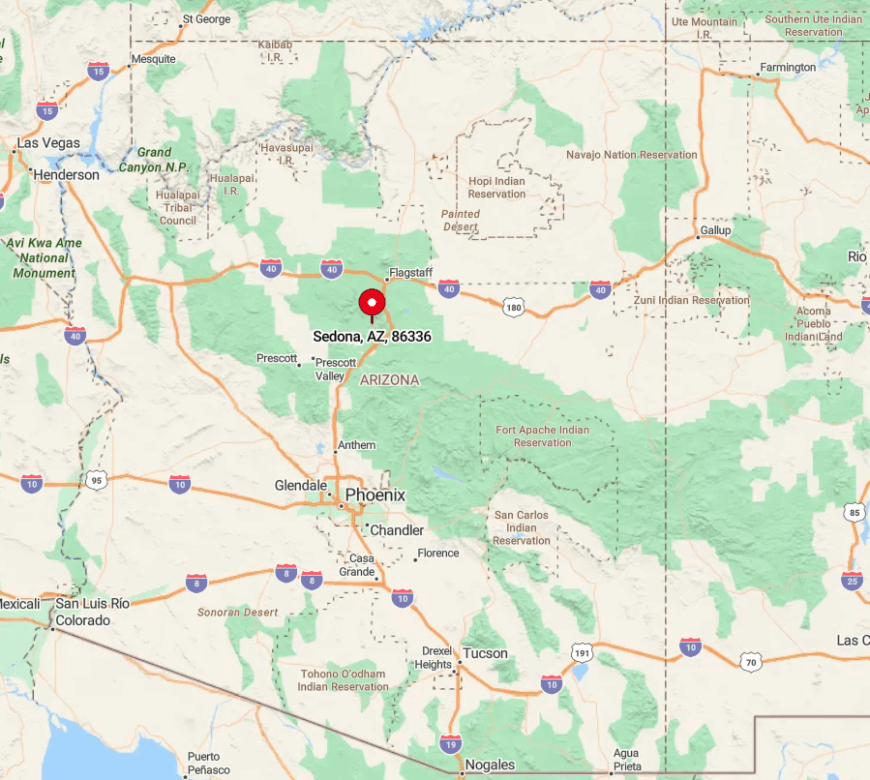
Sedona is located in central Arizona, approximately 120 miles north of Phoenix and 30 miles south of Flagstaff, accessible via State Routes 179 and 89A. The town is nestled in Oak Creek Canyon, surrounded by the Coconino National Forest’s dramatic landscapes.
I always find the drive into Sedona to be breathtaking, with the red rocks rising in the distance, signaling the transition into this remarkable area. The elevation of approximately 4,500 feet offers mild weather, making it an ideal destination for year-round exploration.
Getting to Sedona is an experience in itself, as the scenic routes offer glimpses of the natural beauty that awaits in this enchanting destination.

